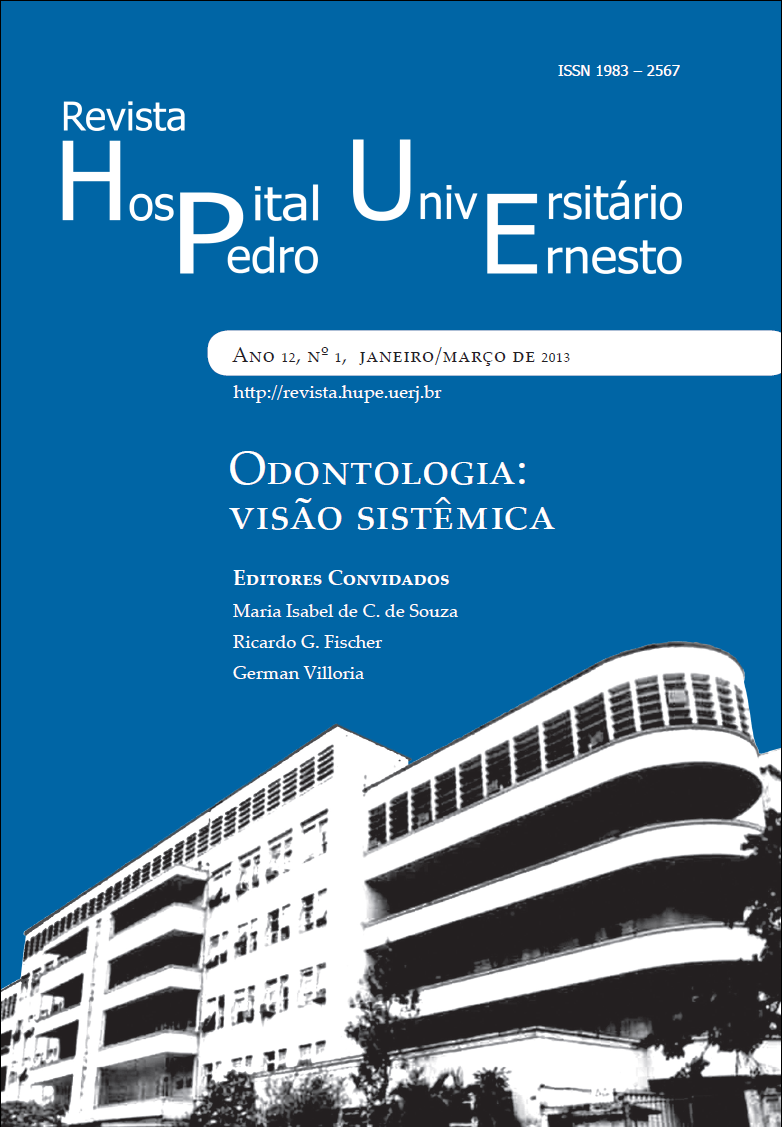Periodontites and omega 3: the role of fatty acid in the inflamatory process
DOI:
https://doi.org/10.12957/rhupe.2013.8804Abstract
The aim of this study was to review the literature about the importance of omega 3 in the prevention and treatment of periodontal disease. The conventional therapies for the treatment of periodontitis focus on combating bacterial infection, however, more recent therapies have focused on the modulation of the host response, with the use of drugs which inhibit inflammation. However, these drugs have significant side effects and may lead to immunosuppression, particularly when used long term. The goal of new therapies would facilitate resolution of inflammation more than a mere suppression, but without bringing unwanted effects to the host. The use of fatty acids in the diet fits into this new treatment modality, seeking a physiological improvement in the host response to infection. Consumption of n-3 fatty acid, called omega 3, decreases the amount of arachidonic acid available in the cells and the production of eicosanoids, decreasing the inflammation, therefore working as potent immunoregulatory molecules. Recently, a new group of lipid mediators derived from omega 3, consisting of resolvin, protectin and lipoxin was described. Such molecules have an important anti-inflammatory effect and are likely to be the explanation for a series of anti-inflammatory actions of omega 3 that have been reported. Recent studies have shown that the use of omega 3 associated with conventional periodontal treatment, consisting of scaling and root planing, leads to better clinical and microbiological outcomes. The omega 3 seems work as a potent molecule in the resolution of inflammation, thereby suggesting its use as an adjunct to periodontal treatment.Downloads
Issue
Section
Artigos


